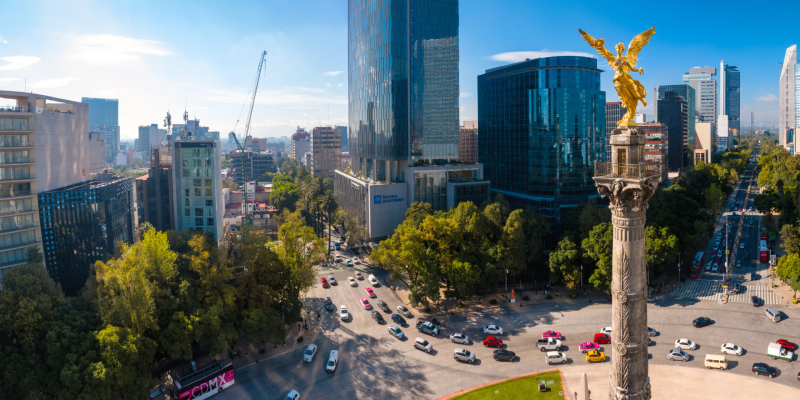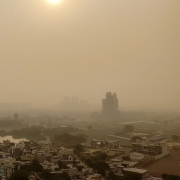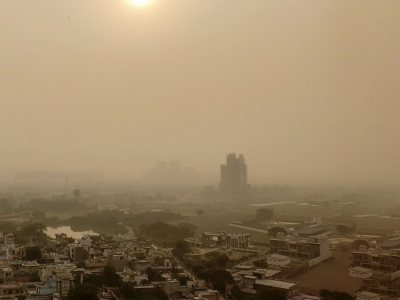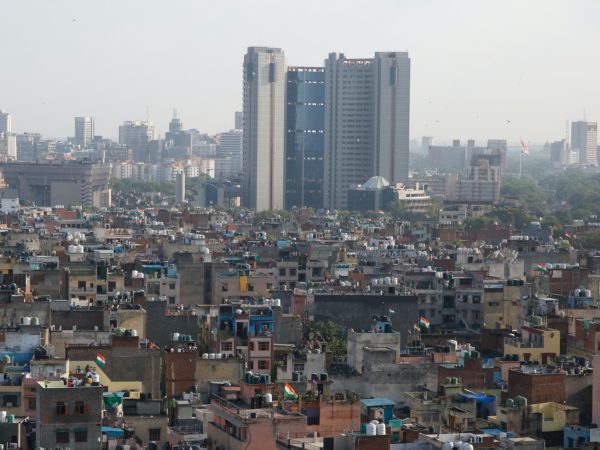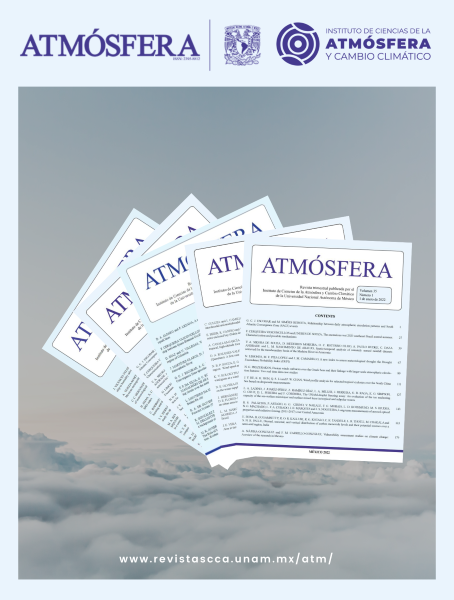Hot days observed during February 2024, reaching 30oC in Mexico City, have made its inhabitants forget that it was the winter season, characterized by dry and cool weather. While such extreme events are often associated with climate change, the current state of the coupled ocean-atmosphere system indicates the last months of an El Niño state, after an expectation of this to be within the top 5 El Niño – Southern Oscillation (ENSO) events (https://cutt.ly/rw1h4T26). The effects of ENSO on the seasonal climate have been widely studied (Philander 1990), and their impacts on Mexico have also been documented (Magana, 2004). Recent seasonal forecasts suggest a progression towards a neutral state for the April-June 2024 season. And further projections indicate a 55% of chance of La Niña developing during the rainy season of 2024. This suggests an end to dry and warm conditions and the possibility of increased rainfall. (Magaña et al. 2003). However, with an ongoing drought over most of the Mexican region, and a water crisis affecting central Mexico, it seems that the seasonal forecasts based on ENSO projections set up the stage for a critical situation for most of the country during the Spring season.
It could be expected that Spring 2024 could be characterized by intense heat waves with temperatures above average and for longer periods of time and an increase in the number of fires over wider areas in the country. Previous events of El Niño in Mexico during Spring have been characterized by an increase in the surface temperature. Heat waves that occurred during Spring following the maximum El Niño state, have been the events with the longest duration in the period 1880-2005 (Jáuregui 2009). In addition, it is likely that the next Spring will experience an increase in the number of fires as well as an increase in the regional pollution associated with biomass burning (Ríos and Raga 2018). An example of this combination of factors are the fires over southeastern Mexico and Central America during the Spring of 1998 following the peak of El Niño (Raga 2020). During that season, the affected areas reached 582 857 ha, exceeding 99% of the mean area during the 1990 – 1997 period (see https://www.fao.org/3/x2095s/x2095s10.htm). The current drought status over the country could favor such events (see drought monitor status at: https://smn.conagua.gob.mx/es/climatologia/monitor-de-sequia/monitor-de-sequia-de-america-del-norte).
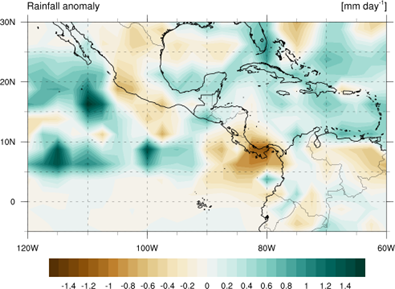
There is a possibility that the trend in heat waves projected for Spring could be over during the Summer of 2024. The latest ENSO forecast (https://iri.columbia.edu/our-expertise/climate/forecasts/enso/current/) projects that the Summer season could be characterized by a neutral to La Niña state. Such a transition implies that we could expect higher chances of a copious rainy season over the Mesoamerican region (Magaña et al. 2003), in agreement with seasonal forecast from IRI https://iri.columbia.edu/our-expertise/climate/forecasts/seasonal-climate-forecasts/. Since ENSO forecasts made during the Spring season are less reliable, we could consider a second scenario with a neutral ENSO phase. However, this scenario based on previous events suggest a slight below-normal rainfall season (see Fig. 1), and while not critical, it could reinforce the unfavorable scenario following the current drought in large regions of Mexico.
The Spring season is expected to be drier and warmer than usual, but there is still time to act and take measures to mitigate the forthcoming conditions. Fires are usually initiated from human activities such as farming activities, campfires, and unsupervised trash dumps. Controlling farming activities could be beneficial against fires, as well as for health issues associated with pollutants, as recently documented in India (Singh 2024). Additionally, an increase in the supervision over national parks and federal areas, where people usually camp, can also help to reduce risks associated with fires, particularly over mountain regions. Recent events have shown that fires over mountain regions in Mexico can impact in the quality of air in Megacities (Carabali et al. 2021), as illustrated in Fig. 2.

The current water availability, as measured by the level of dams, has reached critical levels over most of the country. While this is important for all sectors, a main concern is arising for Mexico City, with a population of around 22 million people. The dams of the Cutzamala system, which provides water for human consumption in the city, have decreased to around 30% of their capacity, and such levels are even noticeable from satellite imagery (see Fig. 3).
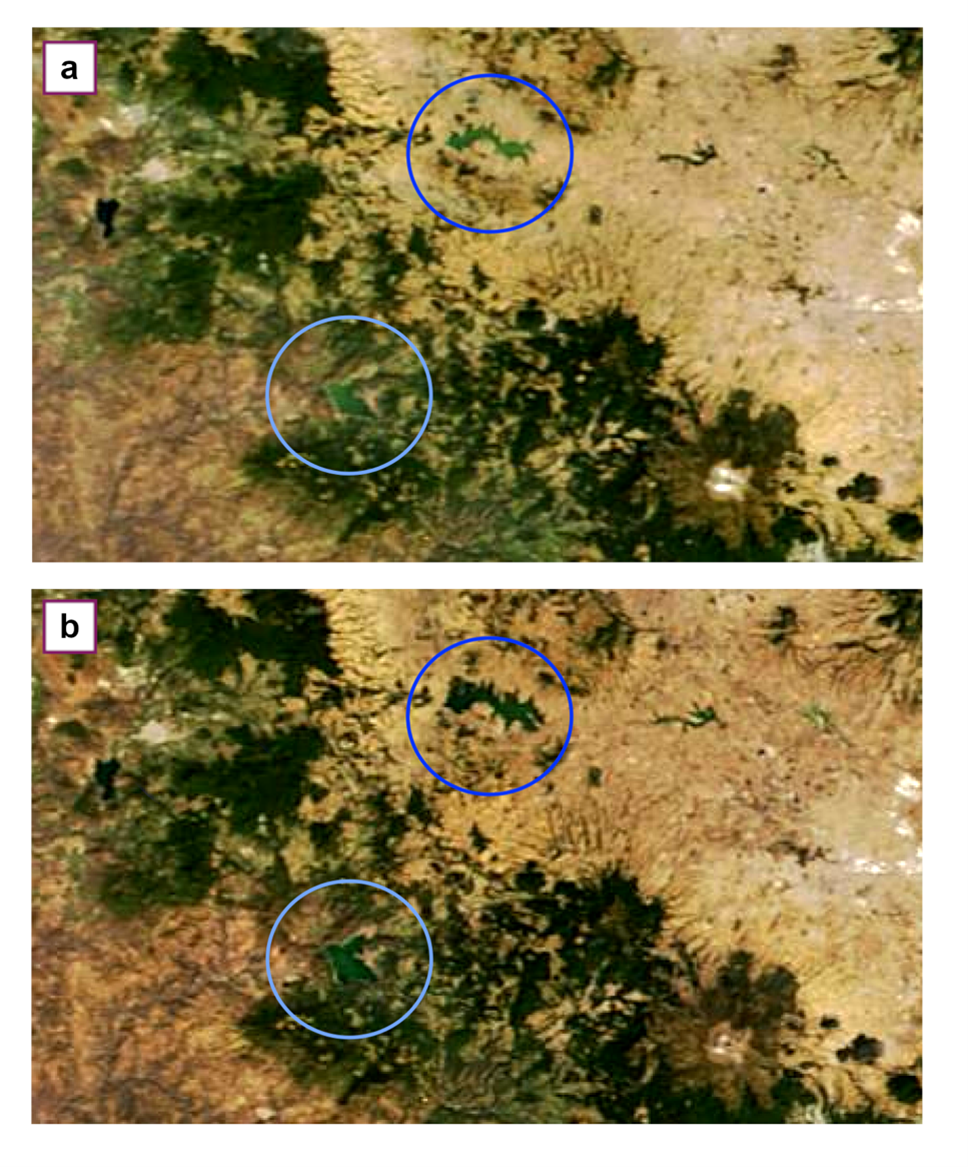
Water availability is not only a function of year-to-year variability. Figure 4 shows the levels of two dams representative of three different regions of Mexico. Over the left side, it can be observed that the central and northern region (Fig. 4a, and 4c) have presented a steady decrease, while the southern region has been showing steady levels (Fig. 4e) during the last five years. While this picture could represent a shock, given the current status for most of the country, it is necessary to illustrate that this variability is also dependent on large-scale patterns on decadal timescales. For this purpose, the right side of Fig. 4 shows the anomalies in the level of the dams. A radical shift in all three plots is observed around 1998, changing in sign more prominently over the northern and the central regions (Fig. 4b and 4d). This could be associated with the Pacific Decadal Oscillation (PDO), as well as with the Atlantic Multidecadal Oscillation (AMO). For example, it has been demonstrated how these two oscillations shift around 1998 and that they play an important role on the modulation of Easterly Waves over the Eastern Pacific (Torres and Thorncroft 2022b), and therefore on rainfall over continental regions.

For the specific case of dams in Mexico, Fig. 5 provides two examples of how the dam levels could be associated with interdecadal variability. Figure 5a shows the relationship between the PDO index and the anomaly of a northern dam (PMHSI). Similarities between both variables are evident, excepting periods between 2000 – 2005, and around 2008. In any case, both time series present a correlation coefficient r=0.42, suggesting that a direct relationship between the PDO index and the dam levels over the northwest Mexican region. A similar pattern can be observed for the central region. Figure 5b shows now the relationship between the AMO index and the BRVMX dam level anomaly, showing again in this case, a direct relationship with the AMO, with a correlation coefficient of r=0.29. While these results are not definitive and require further analysis, they provide a basis to assume the importance of interdecadal variability on rainfall and therefore on the water resources in Mexico. Finally, regarding regions near the ITCZ (as the southeast region), it has been shown that El Niño plays a more important role for rainfall and water availability (Arellano-Monterrosas 2019). In any case, while the water availability is expected to return to normal levels in Summer, the current crisis still poses a challenge for this Spring 2024.
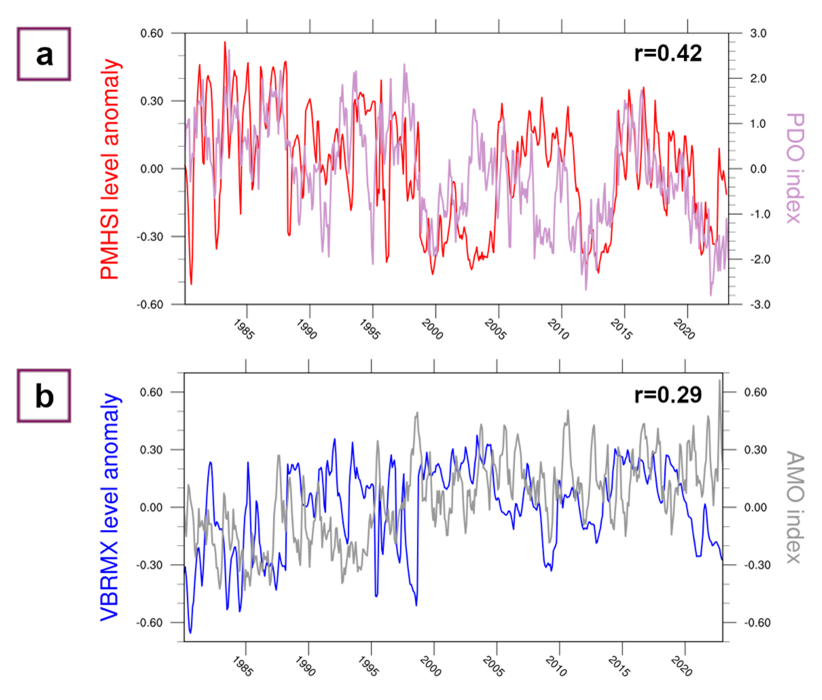
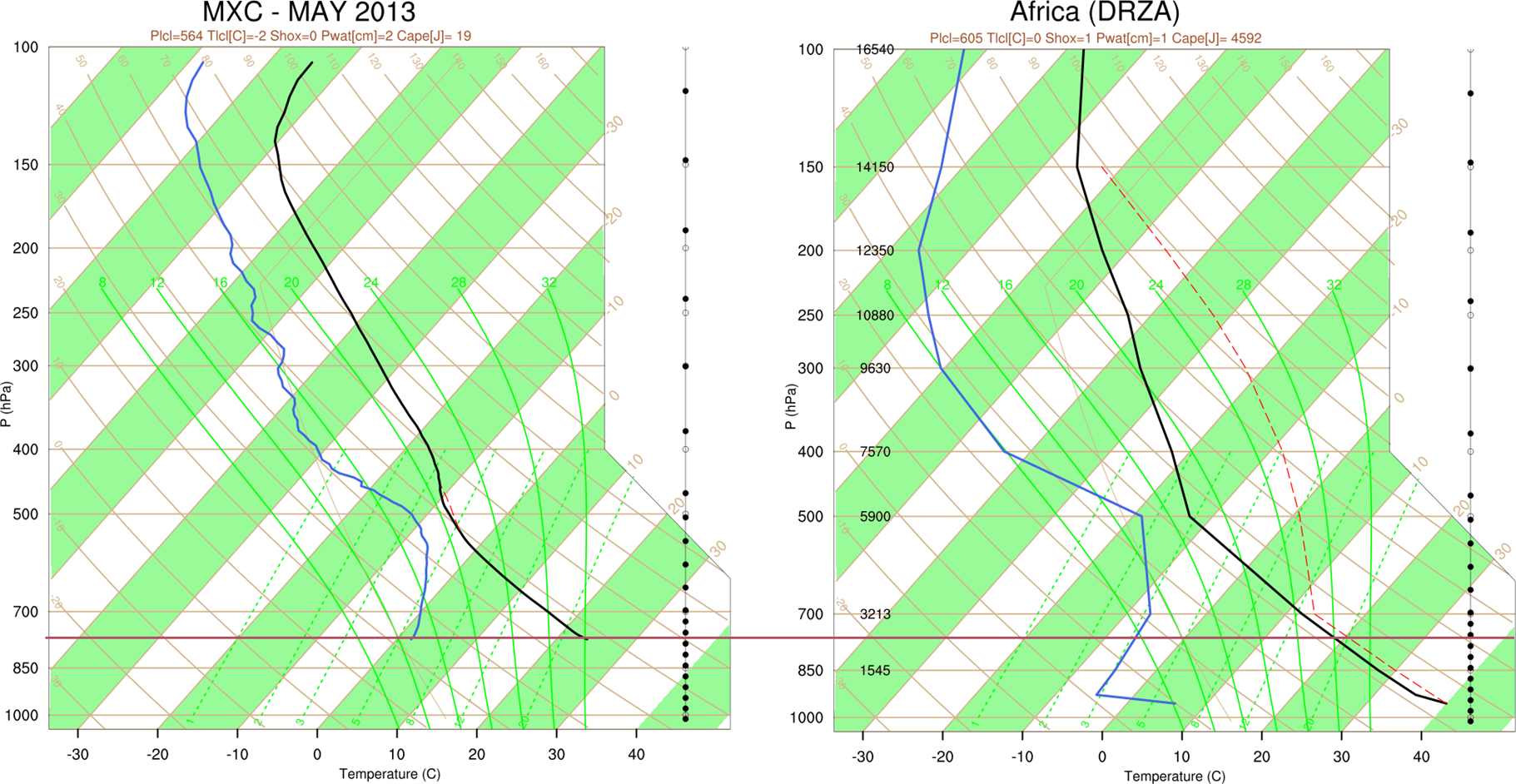
Finally, it is necessary to emphasize that the management of water resources is a delicate topic, and needs the coordination of the local and federal government, hydrologists, and overall, the understanding and consciousness of people about water. Perhaps it is also time to realize that during Spring more than a half of the Mexican region (center and north) lives under atmospheric conditions that resemble those over Africa (see Torres and Thorncroft 2022a). As an example of this, Fig. 6 shows two different soundings during Spring over Mexico City and Agadez, Nigeria. The average of dry atmospheric conditions during May 2013 – shown by an adiabatic temperature profile – is similar to that of a typical day over the African desert, particularly at the height of Mexico City (highlighted by the horizontal purple line). Marginal differences in moisture are observed, this suggesting an atmospheric environment equivalent to a desert. Therefore, it is necessary to start looking for long-term solutions regarding water resources under these conditions and particularly in future climate scenarios.
Acknowledgments
We acknowledge the use of imagery from the NASA Worldview application (https://worldview.earthdata.nasa.gov), part of the NASA Earth Observing System Data and Information System (EOSDIS). Also, we acknowledge the International Research Institute for Climate and Society at Columbia University for making seasonal forecasts available (https://iri.columbia.edu/our-expertise/climate/forecasts/seasonal-climate-forecasts/). Multidecadal indexes retrieved from NOAA Physical Sciences Laboratory. For PDO: https://psl.noaa.gov/pdo/. For AMO: https://psl.noaa.gov/data/timeseries/AMO/. Additionally, we acknowledge the availability of NOAA CPC for their discussions and forecasts, as well as University of Wyoming and CONAGUA – Mexico for their data availability.
References:
Arellano-Monterrosas, J. L., & Ruiz-Meza, Laura Elena., 2019: Variabilidad climática y eventos extremos en la cuenca del río Zanatenco, Chiapas. Tecnología y ciencias del agua, 10, 249-274., https://doi.org/10.24850/j-tyca-2019-03-10.
Carabali, G., and Coauthors, 2021: Characterization of aerosol particles during a high pollution episode over Mexico City. Scientific Reports, 11, 22533, https://10.1038/s41598-021-01873-4.
Jáuregui, E., 2009: The heat spells of Mexico City. Investigaciones Geográficas, 70, http://www.scielo.org.mx/scielo.php?script=sci_arttext&pid=S0188-46112009000300005&lng=es&tlng=en.
Magana, V., Ed., 2004: Los impactos de El Niño en México. Universidad Nacional Autónoma de México.
Magaña, V. O., J. L. Vázquez, J. L. Pérez, and J. B. Pérez, 2003: Impact of El Niño on precipitation in Mexico. Geofísica internacional, 42, 313-330, https://www.redalyc.org/articulo.oa?id=56842304.
Philander, S. G., 1990: El Niño, La Niña, and the Southern Oscillation. Academic Press.
Raga, G., 2020: Smoke in the Air…. Atmosfera, https://doi.org/10.20937/ATM.52873.
Ríos, B., and G. B. Raga, 2018: Spatio-temporal distribution of burned areas by ecoregions in Mexico and Central America. International Journal of Remote Sensing, 39, 949-970, https://doi.org/10.1080/01431161.2017.1392641.
Singh, J., 2024: Is Agri-residue Burning a Menace for Air Quality & Public Health in Delhi, India? Atmosfera, https://doi.org/10.20937/ATM.53365.
Torres, V. M., and C. D. Thorncroft, 2022a: Analysis of the environment that supports Easterly Waves over the Eastern Pacific and the Intra Americas Sea in the Boreal Summer – A Potential Vorticity perspective. J. Climate, 1-47, https://doi.org/10.1175/jcli-d-21-0482.1.
Torres, V. M., and C. D. Thorncroft, 2022b: Interdecadal Variability of Easterly Waves Over the Tropical Northeastern Pacific. Geophys. Res. Lett., 49, e2022GL099090, https://doi.org/10.1029/2022GL099090.
Victor M. Torres. Ph.D. from the State University of New York at Albany and currently a postdoc at the ICAYCC – UNAM. His main research focuses on Tropical Meteorology with emphasis on Easterly Waves. Other topics in his research include Modeling of extreme events and Weather forecasting. He also enjoys coffee.

